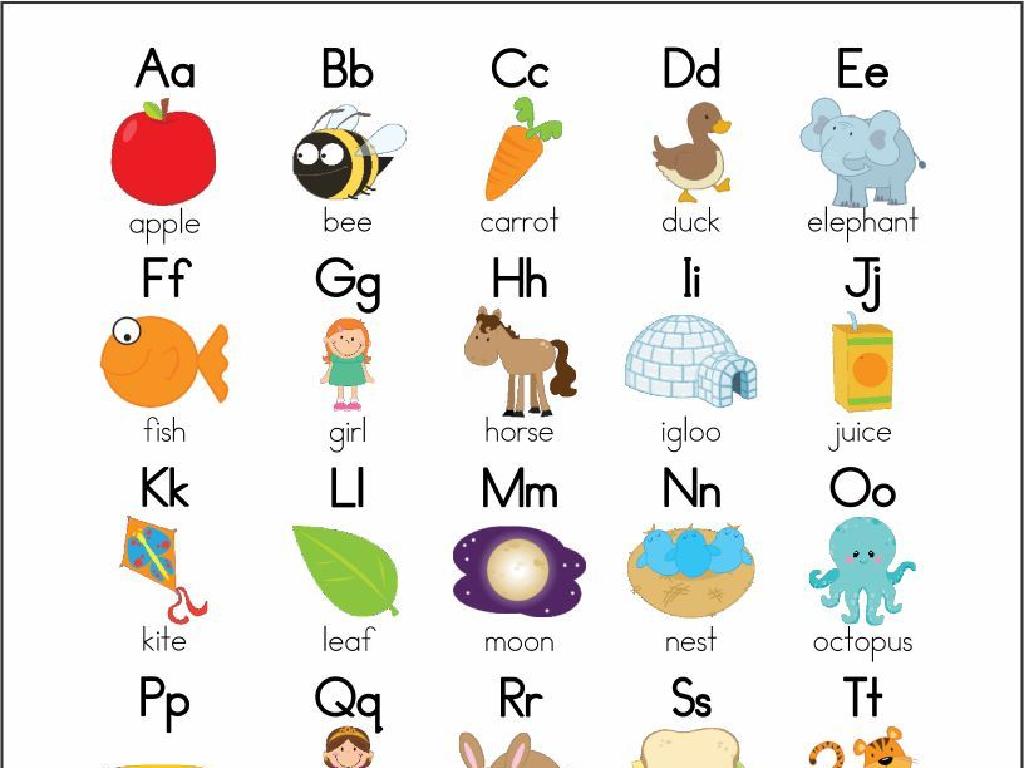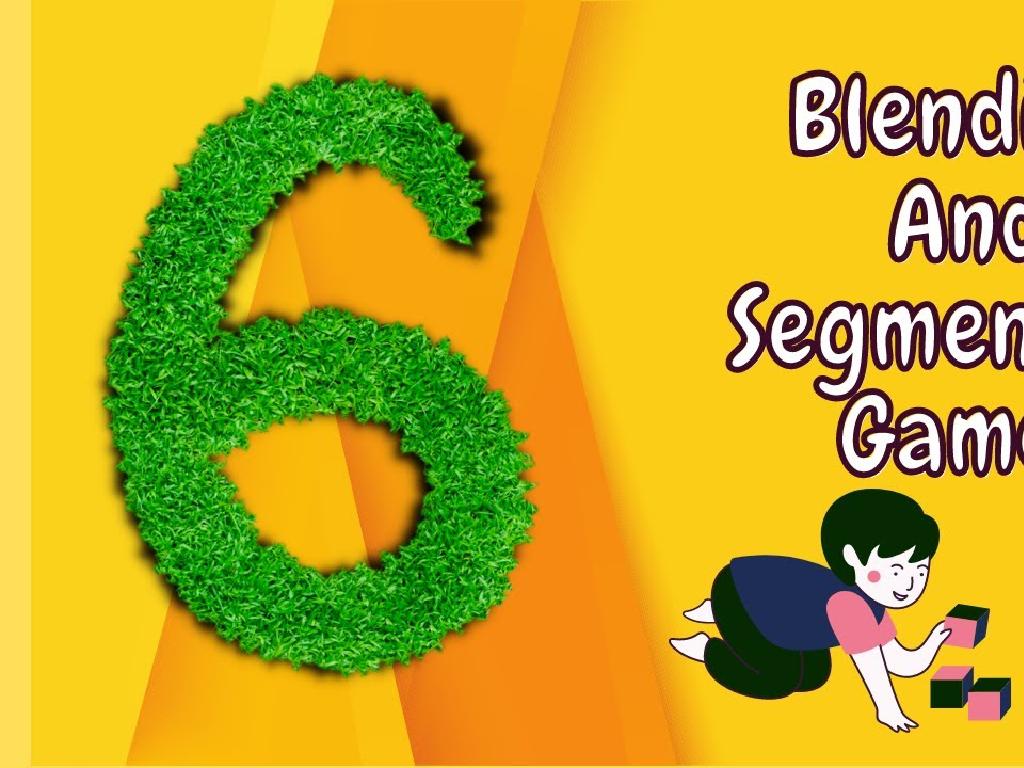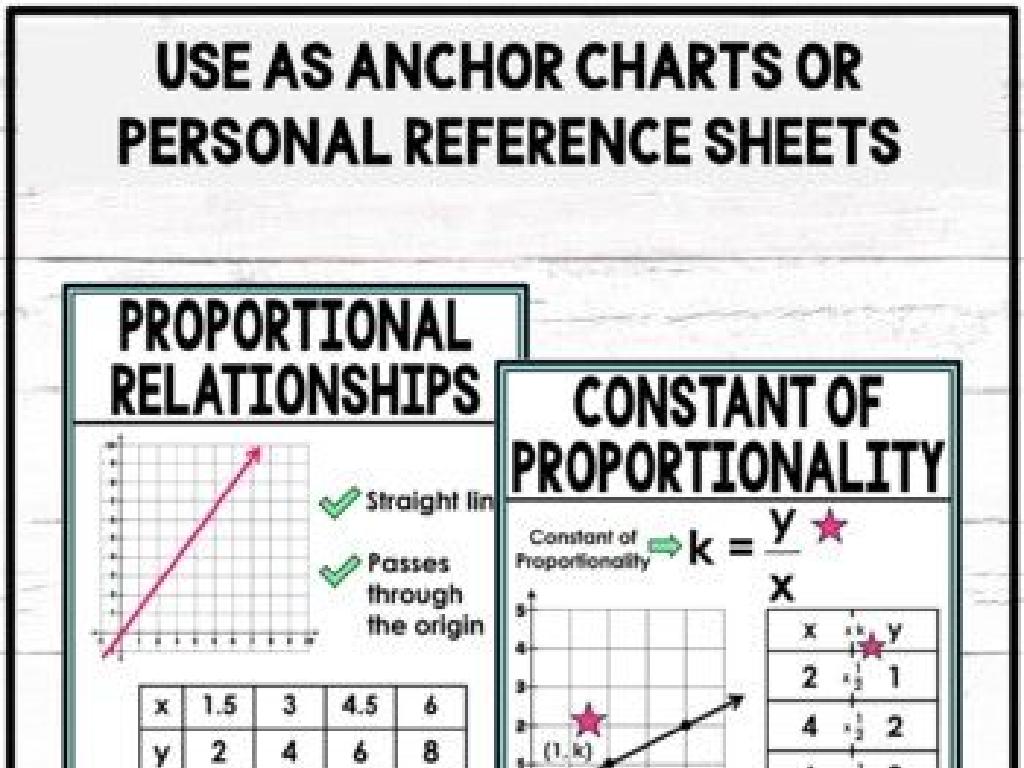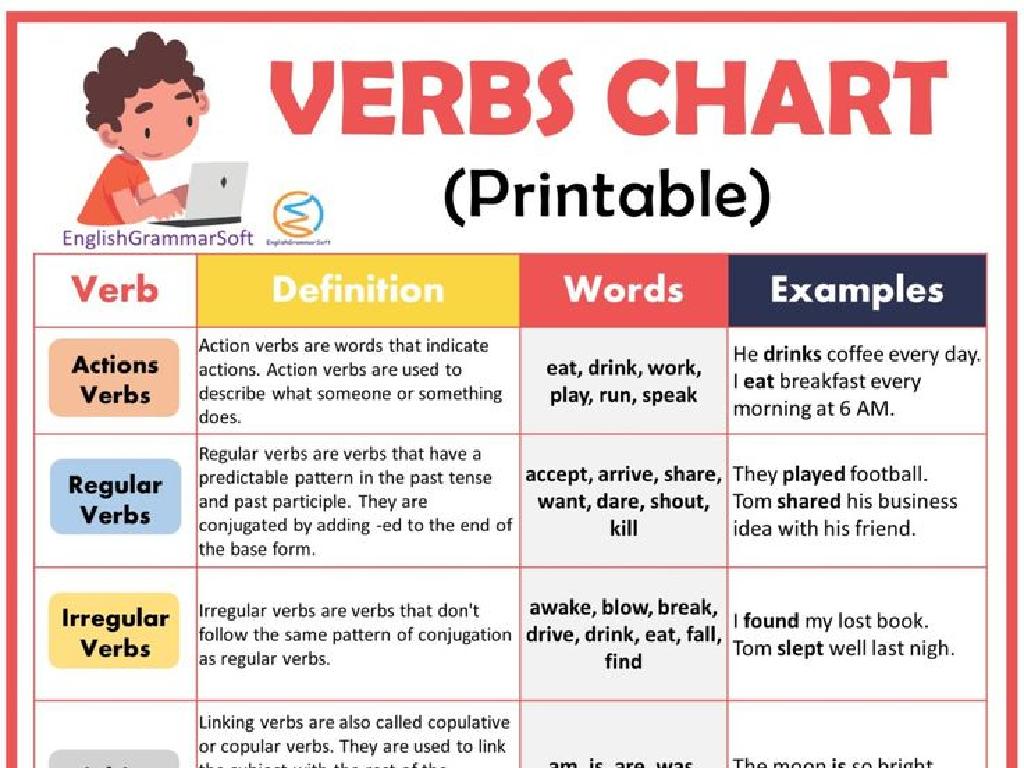Count Blocks - Up To 100
Subject: Math
Grade: Kindergarten
Topic: Numbers And Counting To 100
Please LOG IN to download the presentation. Access is available to registered users only.
View More Content
Welcome to Numbers: Counting with Blocks!
– Greet our little mathematicians
– Today’s goal: Learn to count
– Counting up to 100
– We’ll count from 1 to 100 together
– Using blocks to count
– Blocks help us visualize numbers
|
This slide is designed to introduce Kindergarten students to the concept of counting up to 100 in a fun and interactive way. Begin the lesson with a warm greeting to make the children feel excited about learning math. Explain that the day’s objective is to understand how to count to 100. Use physical blocks or visual aids to demonstrate counting in increments, possibly grouping them into tens to simplify the process. Encourage the students to participate by counting aloud together. This hands-on approach helps young learners grasp the concept of quantity and the sequential nature of numbers. The activity can be made more engaging by allowing students to handle the blocks and count along with you.
Learning to Count with Blocks
– What is counting?
– Counting tells us how many items are present.
– Counting things we see
– We can count anything: toys, fingers, blocks!
– Counting from 1 to 10
– Let’s count together: 1, 2, 3, … up to 10.
– Practice makes perfect
|
This slide introduces the concept of counting to Kindergarten students. Begin by explaining that counting is a way to find out how many things there are. Use relatable examples like toys, fingers, and blocks to illustrate the point. Engage the students by counting together from 1 to 10, using blocks or other classroom items to make it interactive. Encourage them to practice counting with various objects in the classroom or at home to reinforce the concept. The goal is to make them comfortable with numbers and the idea of counting sequentially.
Counting Blocks in Groups
– Blocks make counting fun
– Create groups of 10 blocks
– It’s like having 10 cookies in one bag!
– Counting groups saves time
– Like counting 10, 20, 30, instead of 1 by 1
– Practice counting to 100
– Let’s try counting groups together!
|
This slide introduces the concept of counting in groups using blocks, which is a visual and tactile method suitable for Kindergarten students. By grouping blocks into sets of 10, children can learn to count by tens, which is a foundational skill for understanding the base-10 number system. Encourage the students to physically group the blocks during the activity to reinforce the concept. As an activity, have the children group blocks into sets of 10 and then count all the groups to reach 100. This method not only makes counting to 100 quicker but also prepares them for future math skills like addition, multiplication, and understanding place value. Make sure to walk around the classroom to assist and praise the students as they practice this new counting method.
Let’s Practice Counting Blocks!
– Count blocks from 1 to 20
– Start with one block, add more until we reach 20
– Each new block is one more
– Adding a block each time shows counting by ones
– Observe the blocks stacking
– Visualize how numbers increase with each block added
– Understand counting concept
|
This slide is designed to help Kindergarten students practice counting in a fun and interactive way by using blocks. Start with a single block and count aloud as you add more blocks, one at a time, up to 20. This visual and physical representation of numbers helps students understand the concept of incrementing by one. Encourage the students to join in and count along. As you stack the blocks, students will be able to see the progression of numbers and understand that each additional block represents the next number in the sequence. This activity lays the groundwork for number recognition and basic addition. For the activity, consider having different sets of blocks for students to count, or use a digital tool that simulates block stacking for counting.
Big Numbers: Counting to 100
– Understanding the number 100
– Counting 10 groups of 10 blocks
– Each group has 10 blocks, count 10 groups to make 100
– Visualizing a tower of 100 blocks
– A tower 10 blocks wide and 10 blocks tall shows us 100
– Practice counting with blocks
– Let’s count together using blocks to reach 100
|
This slide introduces the concept of the number 100 to Kindergarten students, emphasizing that it is a large number but manageable when broken down into smaller groups. Start by discussing the number 100 and how it might seem big. Then, explain that by counting ten groups of ten, we can easily reach 100. Use a visual aid, like a picture of a block tower, to help students imagine and understand the concept of 100 blocks. Finally, engage the students in a hands-on activity where they practice counting to 100 using physical blocks or illustrations, reinforcing the idea of grouping in tens to simplify the process. The activity should be interactive and fun, allowing students to physically manipulate the blocks to better grasp the concept.
Counting to 100 with a Chart
– Learn to count using a chart
– A chart can guide us to count from 1 to 100
– Chart has 10 rows of 10 numbers
– Each row adds up to 10, making it easy to see patterns
– Counting practice with the chart
– We’ll count aloud following the chart, from 1 to 100
|
This slide introduces the concept of counting to 100 using a visual chart, which is an effective tool for Kindergarten students to understand the sequence of numbers and patterns within. The chart is organized into 10 rows with 10 numbers each, simplifying the counting process. During the lesson, guide the students to count aloud together, using the chart as a reference. This will help them to recognize number patterns and understand the concept of base-10, which is fundamental in mathematics. Encourage the students to point to each number as they count and praise their efforts to promote a positive learning experience.
Class Activity: Building Our Number Tower
– Let’s build and count together!
– Create towers using 100 blocks
– Use blocks to make tall towers
– Count each block as you build
– Say the numbers out loud
– Collaborate with classmates
– Help each other and have fun
|
This interactive class activity is designed to help Kindergarten students practice counting to 100 in a fun and engaging way. Provide the students with a large number of blocks and encourage them to build towers, counting each block as they stack them. This will help them understand the concept of quantity and number order. Encourage them to work in small groups to foster teamwork and ensure that they are helping each other with counting. Possible variations of the activity could include: counting by twos, fives, or tens to build the towers, using different colored blocks to represent different number groups, or challenging them to build a tower that represents a specific number less than 100. The goal is to make the learning process hands-on and collaborative.
Review and Goodbye: Counting Masters!
– Celebrating our counting skills
– Grouping blocks into tens
– We stacked blocks in sets of 10 to count easily
– Becoming experts at counting to 100
– Now you can count all the way to 100 using blocks!
– Practice makes perfect
– Keep practicing with blocks at home
|
Today’s class was a success, and the children have done a fantastic job at learning to count to 100 using blocks. It’s important to reinforce the concept of grouping by tens as it’s a foundational skill for understanding the base-ten number system. Acknowledge their progress and encourage them to continue practicing at home. You can suggest that parents help their children find opportunities to count various items in groups of ten to reinforce their skills. As a follow-up activity, consider sending home worksheets that allow children to draw or color groups of ten blocks to continue their practice.






